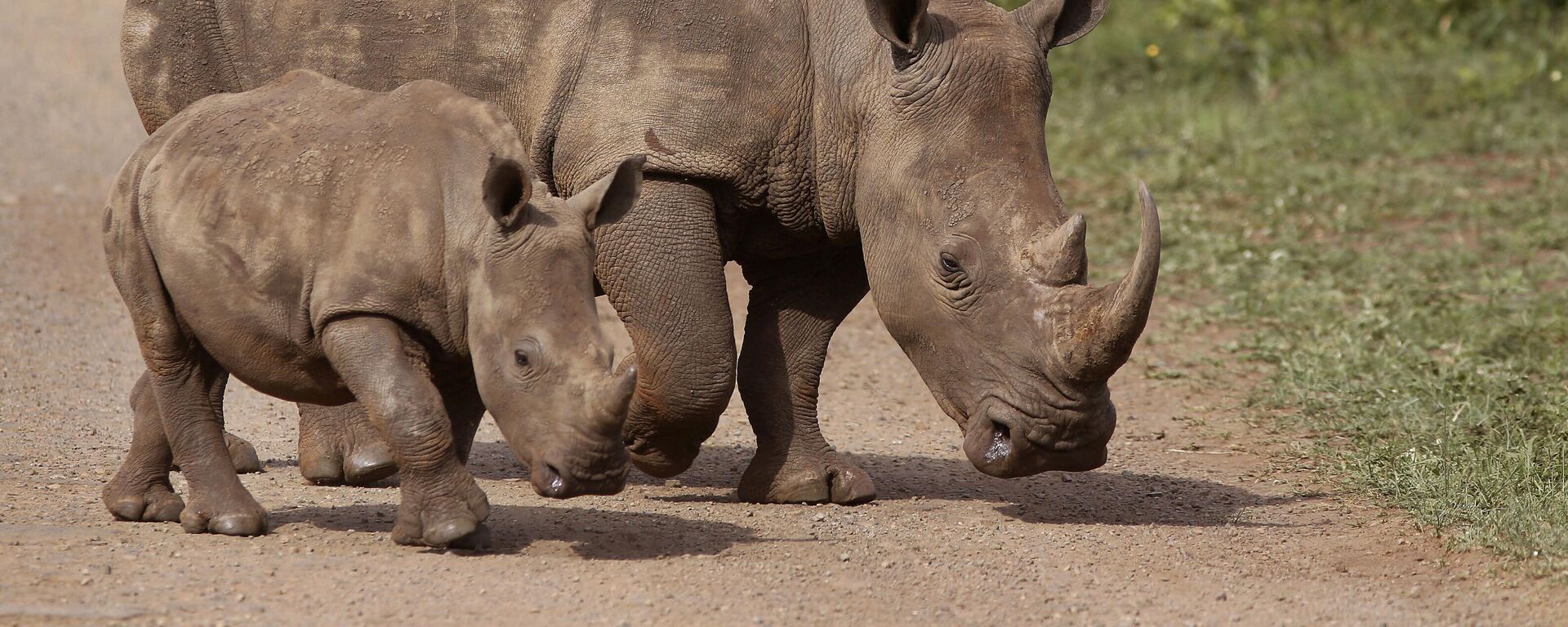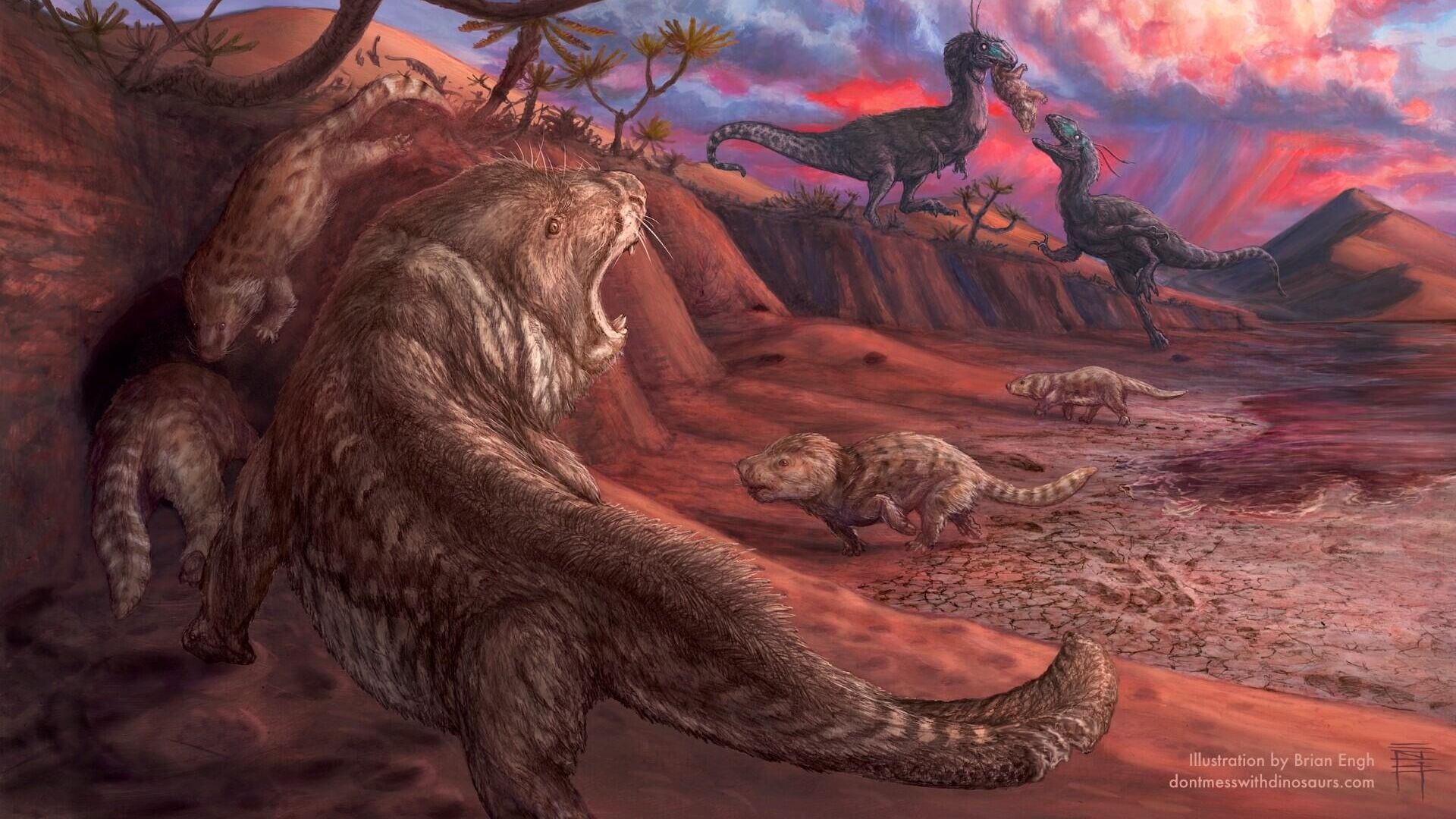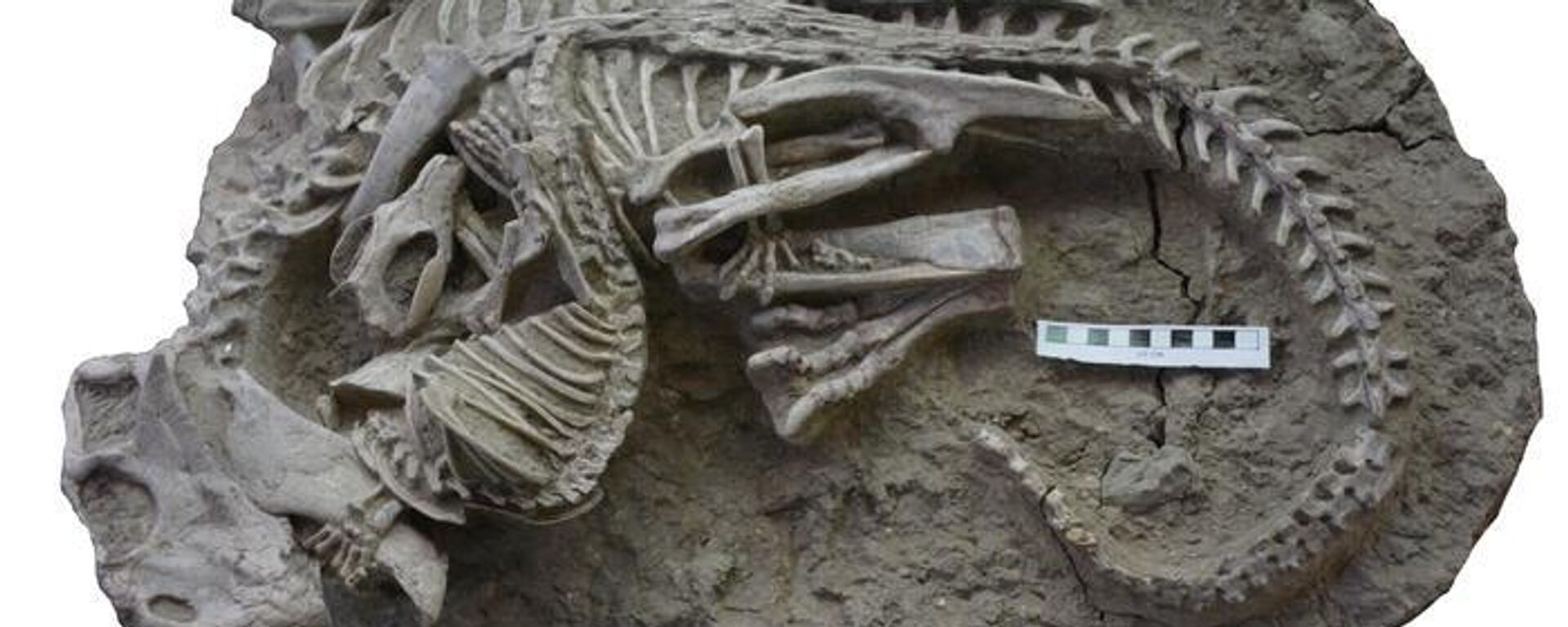https://sputnikglobe.com/20231014/low-water-levels-in-lake-powell-unearth-fossils-of-extinct-jurassic-mammal-1114187675.html
Low Water Levels in Lake Powell Unearth Fossils of Extinct Jurassic Mammal
Low Water Levels in Lake Powell Unearth Fossils of Extinct Jurassic Mammal
Sputnik International
Low water levels in Lake Powell have unveiled a treasure trove of "extremely rare" fossils belonging to a long-extinct mammal relative that inhabited North America 180 million years ago.
2023-10-14T03:41+0000
2023-10-14T03:41+0000
2023-10-14T03:37+0000
beyond politics
science & tech
utah
national park service
fossil
ancient history
ancient
jurassic world
jurassic-era
jurassic world
https://cdn1.img.sputnikglobe.com/img/07e7/0a/0e/1114188520_0:130:1920:1210_1920x0_80_0_0_6c468a1bd41686a9f8ac29f6b7d9de62.jpg
Low water levels in Lake Powell have unveiled a treasure trove of "extremely rare" fossils belonging to a long-extinct mammal relative that inhabited North America 180 million years ago.The newly unearthed fossils are the first-ever tritylodontid fossils found within the Navajo Sandstone, a geological formation established in a prehistoric desert of sand dunes, now known as the Glen Canyon Group. Tritylodontids are a group of near-mammalian reptiles that lived during the Triassic and Jurassic periods, coexisting with early mammals and surviving a mass extinction event. The creatures varied in size, ranging from rat-sized to wolf-sized.Described as "one of the most important fossil vertebrate discoveries in the United States this year" by National Park Service (NPS) officials, the fossils were discovered just in the nick of time. Researchers had a mere 120 days to retrieve the fossils before water levels returned to their regular state.Officials collected hundreds of pounds of rock encasing bones and skeletons, which will be meticulously scanned and analyzed before joining the collections of the Prehistoric Museum in Price, Utah.Studying these fossils is expected to provide invaluable insights into how early mammal relatives thrived through the mass extinction at the end of the Triassic Period and subsequently diversified during the Jurassic Period.Moreover, paleontologists have also stumbled upon a rare bone bed in the slightly older Kayenta Formation, located approximately 60 miles southeast of the Glen Canyon National Recreation Area. However, further details regarding this discovery remain undisclosed.The recent revelation joins a string of extraordinary paleontological finds facilitated by fluctuating water levels, such as the 70 dinosaur tracks uncovered in Texas' Paluxy River in July, including one of the world's longest dinosaur tracks, at Dinosaur Valley State Park.The study was published Monday in The Geology of the Intermountain West journal.
https://sputnikglobe.com/20230926/scientists-forecast-most-mammals-will-go-extinct-in-250-million-years-as-earth-warms-1113670353.html
https://sputnikglobe.com/20230718/new-evidence-shows-ancient-mammal-preyed-on-dinosaurs-scientists-say-1111977179.html
utah
Sputnik International
feedback@sputniknews.com
+74956456601
MIA „Rossiya Segodnya“
2023
News
en_EN
Sputnik International
feedback@sputniknews.com
+74956456601
MIA „Rossiya Segodnya“
Sputnik International
feedback@sputniknews.com
+74956456601
MIA „Rossiya Segodnya“
prehistoric museum in price utah, glen canyon group, tritylodontids, what is tritylodontids, glen canyon national recreation area, triassic period, jurassic period
prehistoric museum in price utah, glen canyon group, tritylodontids, what is tritylodontids, glen canyon national recreation area, triassic period, jurassic period
Low Water Levels in Lake Powell Unearth Fossils of Extinct Jurassic Mammal
These remarkable fossils were uncovered by researchers documenting fossil tracks in the Glen Canyon National Recreation Area (NRA) of southern Utah. The site, typically submerged, briefly became accessible before the summer's snowmelt replenished the lake.
Low water levels in Lake Powell have unveiled a treasure trove of "extremely rare" fossils belonging to a long-extinct mammal relative that inhabited North America 180 million years ago.
The newly unearthed fossils are the first-ever tritylodontid fossils found within the Navajo Sandstone, a geological formation established in a prehistoric desert of sand dunes, now known as the Glen Canyon Group.
Tritylodontids are a group of near-mammalian reptiles that lived during the Triassic and Jurassic periods, coexisting with early mammals and surviving a mass extinction event. The creatures varied in size, ranging from rat-sized to wolf-sized.

26 September 2023, 03:13 GMT
Described as "one of the most important fossil vertebrate discoveries in the United States this year" by National Park Service (NPS) officials, the fossils were discovered just in the nick of time. Researchers had a mere 120 days to retrieve the fossils before water levels returned to their regular state.
Officials collected hundreds of pounds of rock encasing bones and skeletons, which will be meticulously scanned and analyzed before joining the collections of the Prehistoric Museum in Price, Utah.
Studying these fossils is expected to provide invaluable insights into how early mammal relatives thrived through the mass extinction at the end of the Triassic Period and subsequently diversified during the Jurassic Period.
Moreover, paleontologists have also stumbled upon a rare bone bed in the slightly older Kayenta Formation, located approximately 60 miles southeast of the Glen Canyon National Recreation Area. However, further details regarding this discovery remain undisclosed.
The recent revelation joins a string of extraordinary paleontological finds facilitated by fluctuating water levels, such as the
70 dinosaur tracks uncovered in Texas' Paluxy River in July, including one of the world's longest dinosaur tracks, at Dinosaur Valley State Park.
The study was published Monday in
The Geology of the Intermountain West journal.




